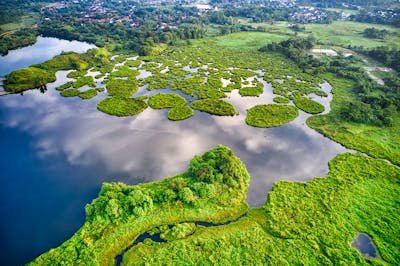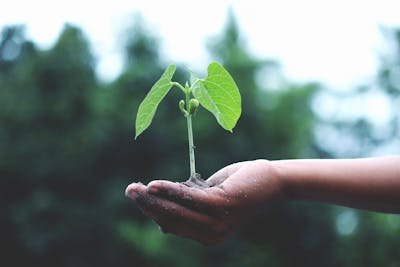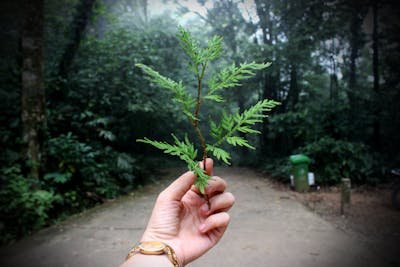In today’s world, where the environment is facing numerous challenges, sustainable farming practices are becoming more important than ever. These practices aim to protect the environment, improve food security, and ensure the well-being of future generations. Sustainable farming is not just a trend but a necessity to safeguard our planet and its resources. This article will explore what sustainable farming is, why it’s important, and the key methods farmers can use to promote sustainability.
What is Sustainable Farming?
Sustainable farming is a method of agriculture that focuses on producing food in a way that protects the environment, supports economic viability, and maintains the well-being of farmers and communities. Unlike conventional farming, which often relies on chemical fertilizers and pesticides, sustainable farming seeks to work in harmony with nature. It emphasizes the use of renewable resources, conservation of water, and maintaining soil health for long-term productivity.
The goal of sustainable farming is to meet the needs of today without compromising the ability of future generations to meet their own needs. By using practices that protect the ecosystem, farmers can ensure that they can continue to grow crops and raise animals in a healthy, productive way.
Why is Sustainable Farming Important?
Sustainable farming is essential for several reasons. First, it helps to preserve the environment by reducing pollution, conserving water, and promoting biodiversity. Traditional farming methods can often lead to soil degradation, water contamination, and the loss of plant and animal species. Sustainable practices aim to reverse these trends and ensure that farming contributes positively to the ecosystem.
Second, sustainable farming helps combat climate change. Agriculture is a significant contributor to greenhouse gas emissions, but sustainable methods can reduce this impact. Practices like agroforestry and organic farming help sequester carbon in the soil, reducing the amount of CO2 in the atmosphere.
Finally, sustainable farming supports rural communities by providing a stable income for farmers and ensuring food security. It promotes local food systems, reduces the need for expensive chemical inputs, and encourages fair trade practices. This can help lift communities out of poverty while ensuring that they have access to healthy, nutritious food.
Crop Rotation: A Time-Tested Method
One of the most common sustainable farming practices is crop rotation. This method involves growing different crops in a particular sequence on the same piece of land. For example, a farmer might plant corn one year, followed by beans or another legume the next. Crop rotation helps improve soil fertility and prevents the depletion of essential nutrients.
Legumes, such as beans and peas, have the unique ability to fix nitrogen from the air into the soil. When rotated with other crops like corn, they naturally replenish nitrogen levels in the soil, reducing the need for chemical fertilizers. Crop rotation also helps control pests and diseases, as many pests and pathogens target specific crops. By rotating crops, farmers can disrupt the life cycles of pests and reduce the need for harmful pesticides.
Organic Farming: A Chemical-Free Approach
Organic farming is another sustainable practice that is gaining popularity worldwide. It focuses on growing food without the use of synthetic fertilizers, pesticides, or genetically modified organisms (GMOs). Instead, organic farmers use natural methods to manage pests and maintain soil fertility.
Organic farming emphasizes the use of compost, manure, and cover crops to improve soil health. These natural inputs provide essential nutrients for plants and promote the growth of beneficial microorganisms in the soil. This leads to healthier, more productive crops and reduces the need for chemical inputs.
Pest management in organic farming relies on natural predators and biopesticides. For example, farmers might introduce ladybugs to control aphids or use neem oil, a natural insecticide, to deter pests. These methods are safer for the environment and reduce the risk of chemical residues in food.
Conservation Tillage: Protecting the Soil
Conservation tillage is a farming practice that involves minimizing the disturbance of the soil during planting and cultivation. Traditional tillage, which involves turning over the soil with plows, can lead to soil erosion, loss of organic matter, and the destruction of beneficial soil organisms.
In contrast, conservation tillage leaves the soil structure intact, reducing erosion and preserving moisture. Farmers use special equipment to plant seeds directly into the soil without plowing, which helps maintain soil health and reduces water runoff. This method also helps sequester carbon in the soil, making it an effective tool in the fight against climate change.
By reducing the need for heavy machinery and fuel, conservation tillage can also lower a farm’s carbon footprint. It’s a win-win solution for both the environment and the farmer’s bottom line.
Agroforestry: Combining Trees and Crops
Agroforestry is a sustainable farming practice that integrates trees and shrubs into agricultural landscapes. This approach mimics natural ecosystems and provides a range of benefits for both the environment and the farmer.
Trees planted alongside crops can help improve soil fertility, conserve water, and provide shade for animals and plants. They also serve as windbreaks, reducing the risk of soil erosion. In addition, agroforestry systems can help sequester carbon, contributing to climate change mitigation.
Agroforestry also promotes biodiversity by creating habitats for birds, insects, and other wildlife. This can lead to healthier ecosystems and improved pest control, as natural predators help keep harmful insect populations in check.
Water Conservation: Using Resources Wisely
Water is a precious resource, and sustainable farming practices prioritize its conservation. Many conventional farming methods rely on large amounts of water, often leading to overuse and depletion of water supplies.
Sustainable farmers use techniques like drip irrigation and rainwater harvesting to reduce water usage. Drip irrigation delivers water directly to the plant’s roots, minimizing evaporation and ensuring that plants receive the right amount of water. Rainwater harvesting involves collecting and storing rainwater for later use, reducing the need for groundwater or river water.
In regions prone to drought, sustainable water management is crucial for ensuring long-term agricultural productivity. By using water more efficiently, farmers can protect this vital resource for future generations.
Integrated Pest Management (IPM): A Balanced Approach
Integrated Pest Management (IPM) is a sustainable farming practice that combines multiple methods to control pests in an environmentally friendly way. Rather than relying on chemical pesticides, IPM uses a combination of biological, cultural, and mechanical controls to manage pest populations.
For example, IPM might involve introducing natural predators, such as birds or beneficial insects, to control harmful pests. Farmers may also use crop rotation, trap crops, and resistant plant varieties to reduce pest infestations. By using a variety of methods, IPM reduces the need for chemical pesticides and minimizes harm to the environment.
Conclusion: A Path Toward Sustainable Agriculture
Sustainable farming practices are essential for ensuring the long-term health of our planet and its people. By adopting methods like crop rotation, organic farming, conservation tillage, agroforestry, and water conservation, farmers can reduce their environmental impact while improving food security and supporting rural communities. These practices not only protect the environment but also help farmers adapt to the challenges of climate change.
As consumers, we can also play a role by supporting sustainable farming through the choices we make at the grocery store. By purchasing organic and locally grown foods, we can encourage farmers to adopt sustainable practices and help build a greener future for agriculture.



